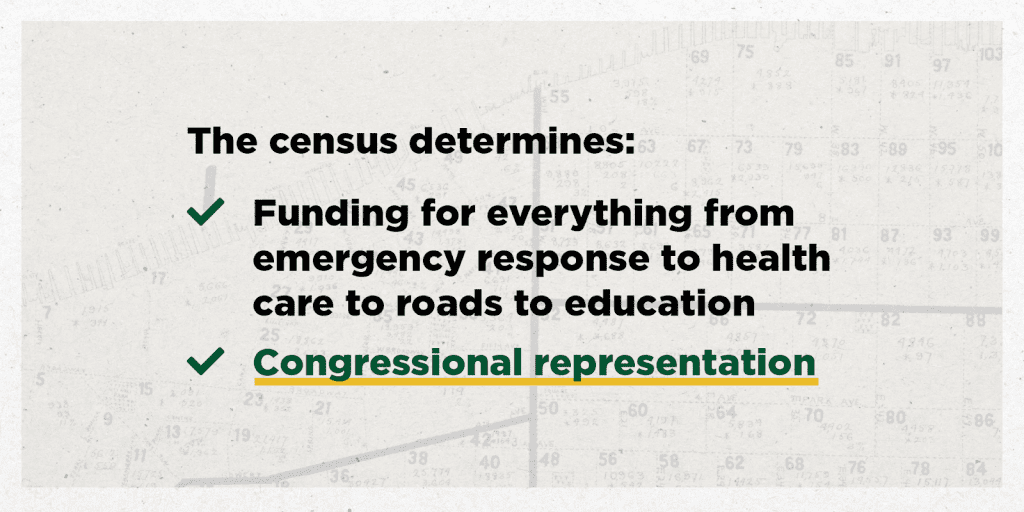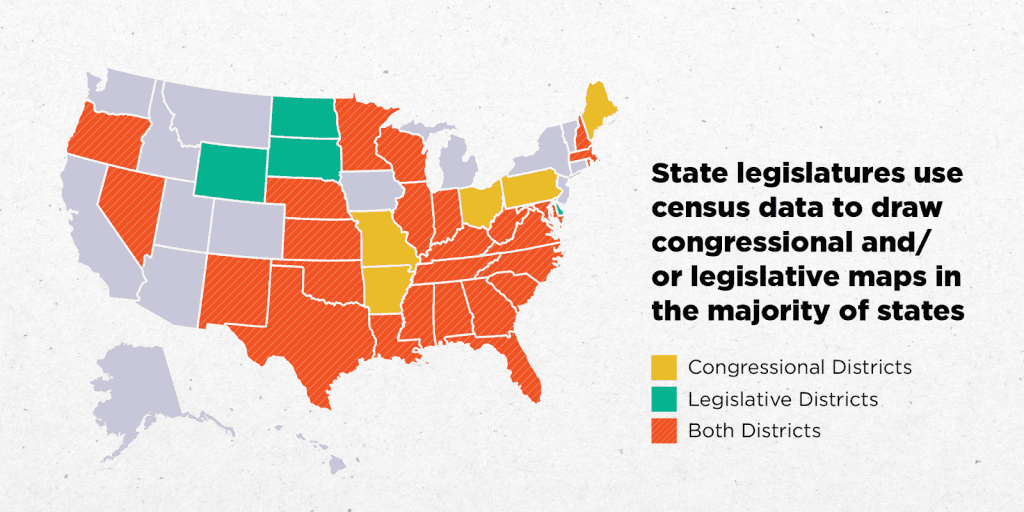Urban and rural. Boomers and millennials. Democrats and Republicans. There’s one thing we all have in common — every ten years, each household in the United States is asked to participate in the census.
Our founding fathers knew that in order to have a democracy by the people and for the people, the government had to know about the people. That’s why the U.S. Constitution mandates that at the beginning of the decade the population be counted and data collected on each and every household. Luckily, the Trump administration has been stopped from adding a citizenship question to the census, which advocates say would have intimidated documented and undocumented immigrants from participating, leading these communities to be undercounted.
It’s important that everyone participates because achieving an accurate census count is critical — the information collected determines everything from federal funding to political representation. The population size of a state or county determines how much money they’re allocated for everything from emergency response to health care to roads to education.

It’s also fundamental to setting the rules of our democracy, determining how many seats each state will hold in the U.S. House of Representatives and the size and scope of state House and Senate districts. Almost every state explicitly or implicitly mandates that census data be used when crafting these new district lines. But depending on who is in charge, that information can either be used to strengthen democracy or weaken it.
In 35 states, state legislators are given an incredible amount of power to determine the new lines on a district map. And after the 2010 census, Republicans showed the American people that when they control the process, they’ll use it to keep themselves in power through gerrymandering — when politicians choose their voters instead of the other way around.

After the 2010 census and elections, when the anti-Obama Tea Party movement led to hundreds of blue to red flips in state legislatures across the country, Republicans were given a major advantage: the ability to redraw district maps to keep themselves in the majority. Using census data, Republicans were able to pack minority communities to weaken their political power and chip away at urban areas, coupling them with more suburban and rural communities to dilute their traditionally Democratic vote. This is gerrymandering, and the consequences are stark.
In 2018, in swing state after swing state, Democrats received more votes statewide but won less than half of seats in the state legislature. 54% of Pennsylvanians voted for a Democratic state House representative, yet Democrats only won 45% of the state House seats. That same year, 53% of Michiganders voted Democrat for the state House, yet Democrats only took 47% of the chamber. The same thing happened in North Carolina, where 51% of voters chose the Democratic candidate for state House, yet Democrats won only 45% of the seats. And in Wisconsin, home of gerrymandering-enthusiast Scott Walker, Democrats won 53% of the vote and just 36% of assembly seats.

Even though this political gerrymandering is radically undemocratic, the conservative-leaning Supreme Court determined last summer that it is not unconstitutional. That means the best way to stop Republicans is to regain control of the redistricting process. And the only way to do that is to win.
Pennsylvania, Michigan, and North Carolina are all top targets for Democrats moving in to 2020, along with some major prizes like the Texas House. Texas already has 36 seats in the U.S. House and they’re expected to pick up as many as three more after this year’s census. If Democrats can play a role in making sure those districts are drawn fairly, we can compete for seats on the federal level, empower blue voters to continue turning out, and flip the entire Lone Star State into a Democratic stronghold.

A successful count in the census is important in our fight to make sure every single person’s voice is counted and heard — but if we want to realize this goal, that means census participation needs to be followed up with voter participation. Without it, the information that Democrats can use to help us can also be used by Republicans to hurt us by gerrymandering us into a decade-long minority. 2020 is a major year that will have generational implications. Let’s kick it off right.

